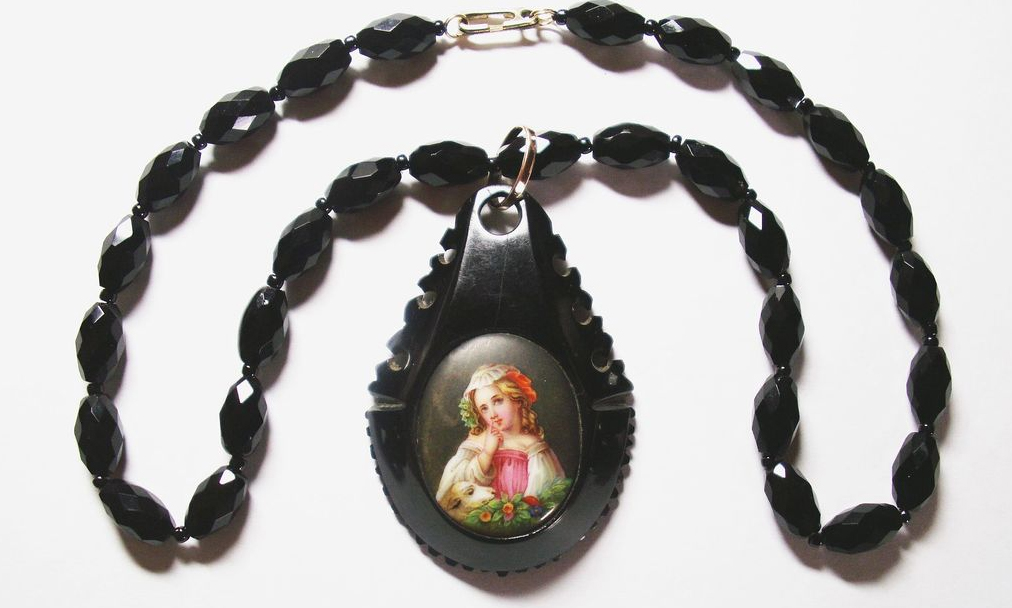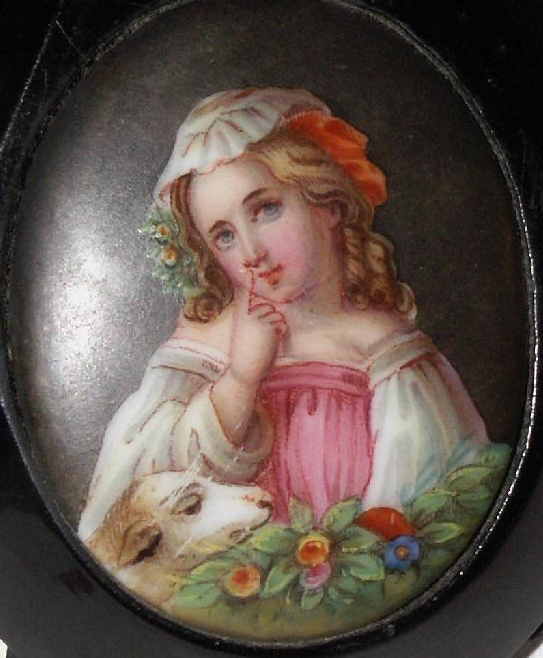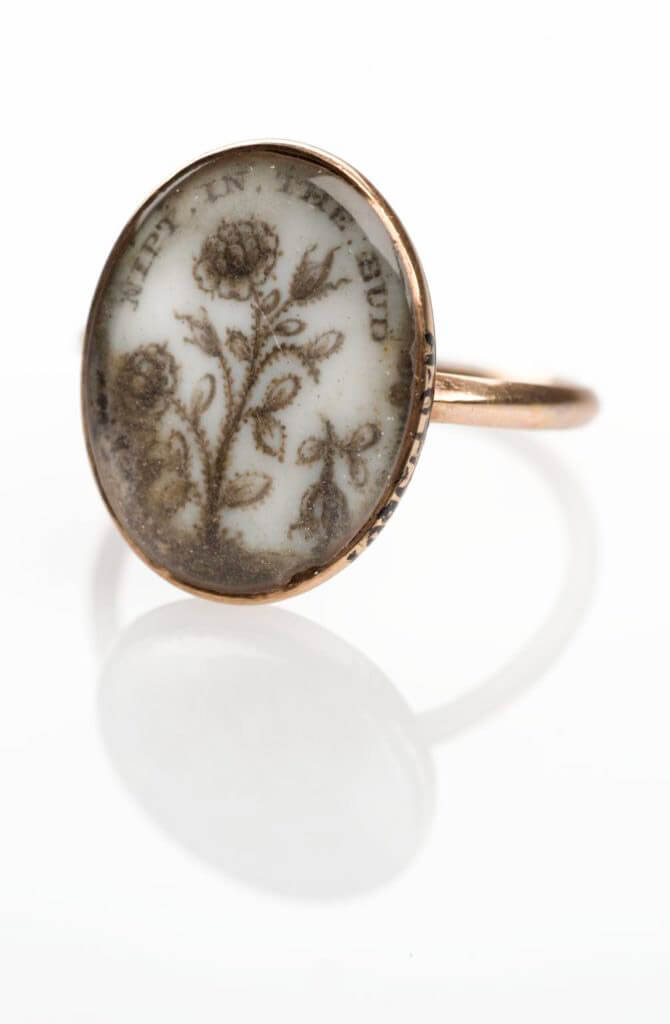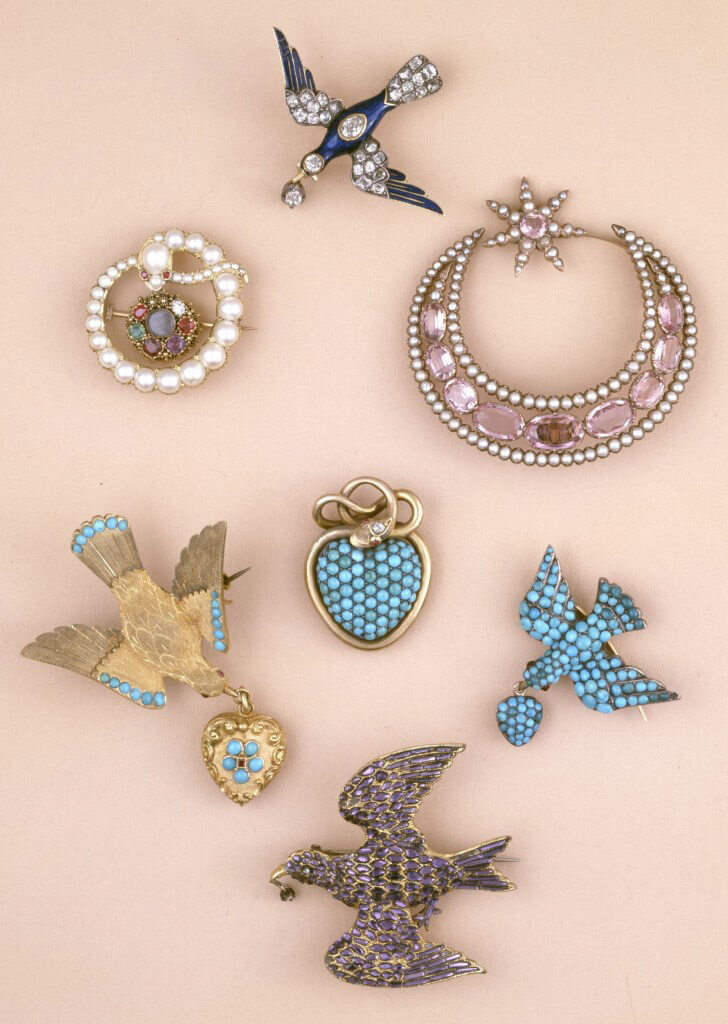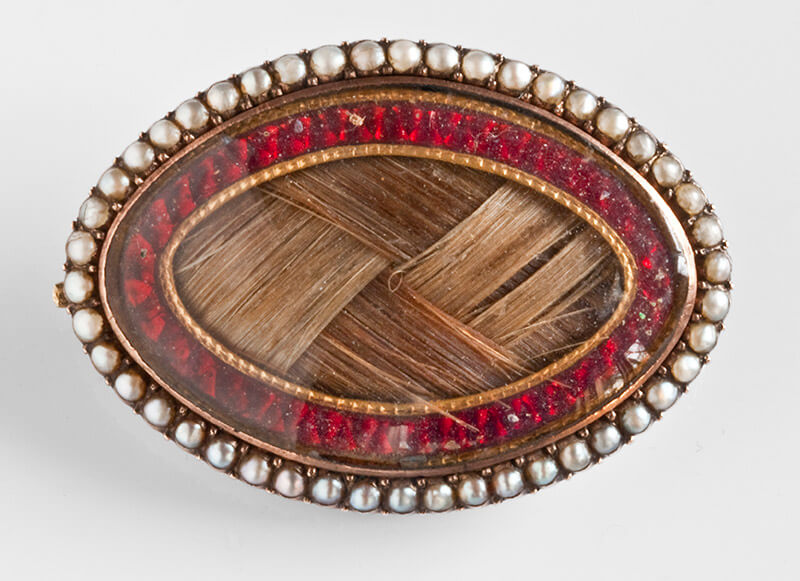Symbolism, The Lamb
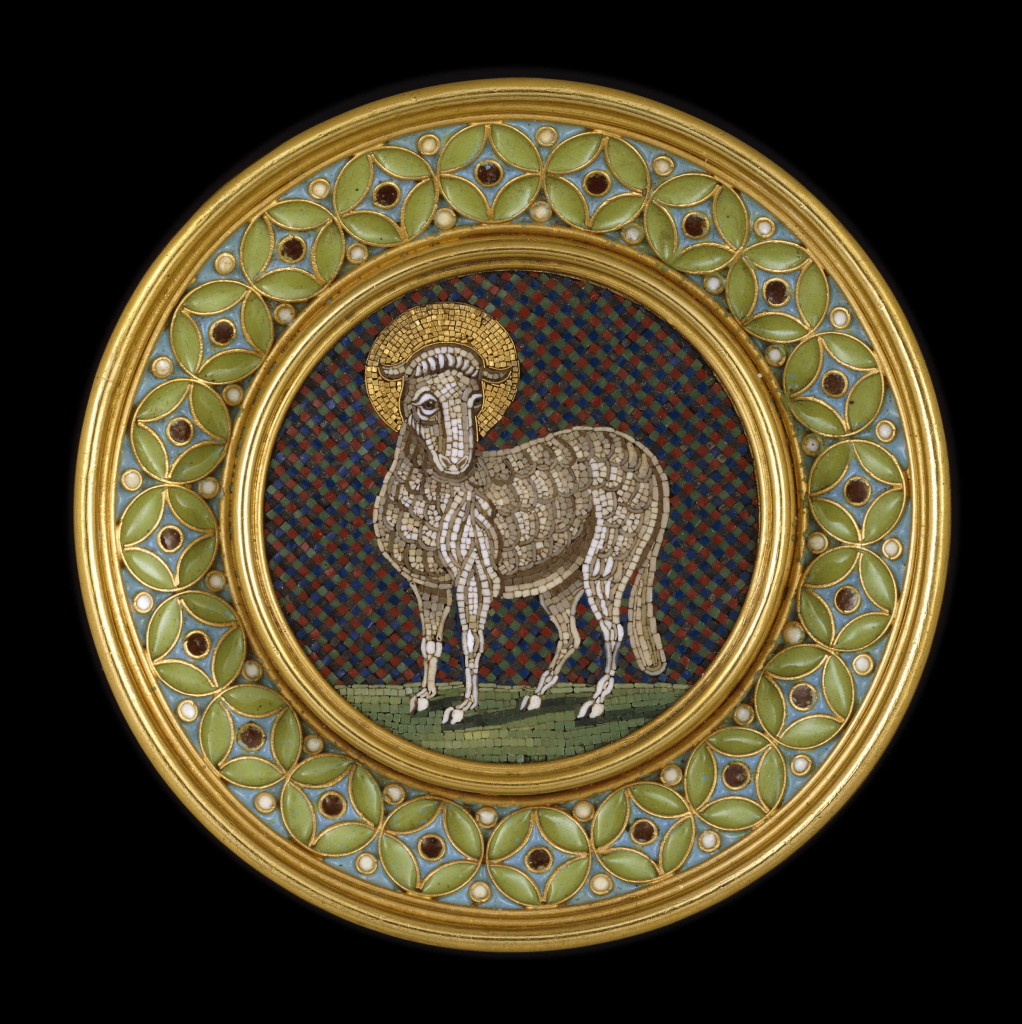
Sunday is the perfect day for sharing your table with your family and friends. You can break bread, drink wine and there is the all important roast! Hence, today’s Symbolism Sunday is dedicated to gathering your flock and celebrating the lamb in jewellery symbolism.
Let us take into account that the sheep/lamb is an animal of ancient origin. Lamb has been fundamentally important to the growth of civilisation, having its roots c.8000 BCE in a southern Anatolian area named Çatalhöyük. The sheep has been recorded in Cuneiform by the Sumerians for the purpose of gods/goddesses who represent/protect flocks and not only were they worshipped, but they were essential to the socio-economic growth of society.
So, as far back as animal worship is considered, sheep are part of the mainstream lexicon. These are animals which produced clothing, meat, milk and fertilisation of the land. The Egyptians depicted the god Khnum with the head of a ram, at the temples at Elephantine and Esna; one of the earliest deities, known as the Nile River’s source. This, in effect, shows just how fundamentally important the lamb was to society.
Lambs were also used in sacrifice towards deities in ancient cultures. The Greeks and Romans practiced animal sacrifice towards deities and it is from this that the concept of sacrifice carries on through the mainstream mind and transcends eras of culture. However, while there were connections of the lamb to deities themselves, it wasn’t for this that we see the symbol commonly used in jewellery from the 18th century.
As the symbol was re-appropriated for the Neoclassical era, that doesn’t have the direct connection to the resonance of the symbol that we’re necessarily looking for. What we need to consider are the Judeo-Christian values of the symbol, which resonate through the society that created this Neoclassical revival.
The Paschal Lamb (Korban Pesach/”sacrifice of Passover”) represents the blood sacrifice put upon door posts of the Israelites to deflect the angel of death from killing the first born of Egypt. It is from here that we have to focus upon the lamb as a sacrifice and how it relates to Jesus. The following passage from from Leviticus 4:32-34:
32‘But if he brings a lamb as his offering for a sin offering, he shall bring it, a female without defect.
33He shall lay his hand on the head of the sin offering and slay it for a sin offering in the place where they slay the burnt offering.
34‘The priest is to take some of the blood of the sin offering with his finger and put it on the horns of the altar of burnt offering, and all the rest of its blood he shall pour out at the base of the altar.
Here, we have a direct reference to the sacrifice of the lamb to atone for sins. The lamb is the symbol of purity and innocence; its sacrifice restores the balance of sin. This relates to the Angus Dei, as John (1:29) had stated;
29 The next day John saw Jesus coming toward him and said, “Look, the Lamb of God, who takes away the sin of the world!
God’s son on earth to take away the sin of the world. The dichotomy here is that the sacrificial lamb from the Old Testament was sacrificed for the sins of others, whereas Jesus knowingly became the sacrificial offering for the world.
Adversely, we have Jesus as the ‘Good Shepherd’, another link to the jewellery that we’ll be looking at (I promise) soon:
11 “I am the good shepherd. The good shepherd lays down his life for the sheep. – John 10:11
Now we enter the realm of a universal symbolism for the lamb and the shepherd; the protector and the protected. The nurturer who guards the flock and would willingly provide the sacrifice for their child. When one takes this into account for the jewellery that displays the depiction of the female shepherdess, we have a complete union of symbolism. There is the delineation between the religious context of the lamb/Christ and the lamb for its direct child/innocence context.
In Jewellery
There are several instances in memorial and sentimental jewellery where the lamb plays a very visible and direct role in the interpretation of symbolism. Much of these have the same relation to the shepherdess and her flock. This transmutes well through various mainstream styles in fashion, due to its ecclesiastical standpoint and also its depiction of ideallic beauty. If you’ve been reading along with me for long enough, you know that both of these things facilitate the changeover from the 18th to 19th centuries.
However, as popular as this symbol is, it’s been linked in the mainstream mind, reinforced every Sunday at your local Church with Jesus as the ‘good shepherd’ and a motif as primal as Western civilisation itself. Hence, when we consider the implications of this religious undertone and how it can appeal in the Neoclassical era, a time when much of this Christian identity was pushed behind the nature of the self, we are still left with a symbol that isn’t so overt as to make an instant statement about its purpose. It relates both to the person, the event/occasion and the religion to which it belongs.
These are the reasons why the lamb and shepherd (or shepherdess) are so consistent in jewellery depictions. By the Neoclassical era, it’s worthwhile to note that the sentiments of religion were not forgotten, simply not so indoctrinated into daily lifestyle and custom. Hence, when a motif, such as these, are used in a more prominent way to identify the grief or love of a person, then it reinforces the nature of the religious purpose as much as it depicts a beautiful scene.
Note this sepia piece, dating from c.1780-90 and its use of the lambs at the feet of the shepherdess as she holds the crook and writes initials into the tree. Depictions of Jesus in Neoclassical pieces would be considered anachronistic and certainly don’t fit with mainstream fashion and how culture had re-appropriated classical thought. With this piece, we have a woman (as much of the Neoclassical depictions display the shepherd), which becomes an allegory for Christ and also a representation of the self. Something of this nature would not be possible in the previous century. What we’re left with immediately places us in the scene of the female, relating her directly to the wearer or the person who commissioned it.
Then we take into account the lambs at her feet. These animals are nestled over each other, in an act of pure gentility, peace, comfort and love. The shepherdess is carrying the crook as to bring her flock close to her at all times and protect them from harm; the crook itself in other pieces (as seen earlier) can also morph into the very symbol of the cross itself, becoming a crosier. The initials in the tree are another wonderful feature that enhances the lamb symbolism in this piece, as she gently scrawls with a smile on her face the initials that we can assume are those of a child. From this, we have a beautiful sentiment of love and one that would be commissioned for the birth of a child as the pride of the mother.
Moving back into the more literal depiction of the lamb/shepherdess combination, the motifs are used for mourning as much as they are for sentimental purposes in the late 18th century. Due to the aforementioned combination of connotations regarding the symbols, they related to the self, rather than a global concept. Hence, the motifs could be used in mourning of the death of a child or unwed woman. The key to understanding these motifs is that the female represents the mother and this is essential to understand the family dynamic of why they were created. A mother in mourning, displaying this affection and grief outwardly is just as important as showing a tomb depiction with a mourning character displayed. These motifs balance well with the more obvious mourning symbols, such as the weeping willow or other garden motifs, but aren’t as prolific next to a tomb.
Then we can look at how the 19th century interpreted these motifs. There aren’t any essential concepts that take away from the ideal of what they appear to be. If the viewer wants to see the lamb and shepherdess (moving towards just a female) in the piece, then that is their interpretation. It still has the basic religious meaning, and without the female depicted with the crook, it links back to the Christian motifs far stronger. However, it was still acceptable for the female depiction in the Romantic period of the 19th century and from the 1850s, finding this motif painted or in mosaic is not uncommon. It becomes not an immediate method of displaying affection as it does an allegorical one. The scenes are not current with the 19th century, a society increasingly industrialised, but reflecting upon the past, where the shepherd and romantic imagery were further removed from the society that displayed them. They were, in effect, becoming concepts of the ideal, hence their romantic nature.
From this, the idea of the lamb as a child is one of the most universal concepts. It is the symbol of this that is found at the grave of children for its simplicity of purity and innocence. For all the seeming tragedy of a sacrifice, the relation to Christ only enhances the gentleness of the symbol, by identifying with innocence, meekness, humility and gentleness.
So, as we can see, the lamb is not just a cute animal or a tasty dish, but there’s quite a lot more going on than meets the eye. It motif still popular today, a motif that is easy to identify, beautiful enough to wear on a charm, pendant or bracelet. A motif that still resonates all the love and empathy as it has for the past two thousand years.
On that note, go spend the rest of the day with family and be thankful for all you have!






